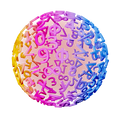11th Grade Q1
Solving equations with rational expressions involves fractions that have variables in the numerator, denominator, or both. Here’s how to solve them step by step:
Method
- Find the Least Common Denominator (LCD):
Identify the denominators in the rational expressions. Find the least common denominator (LCD) to eliminate the fractions. - Multiply Through by the LCD:
Multiply every term in the equation by the LCD. This removes all fractions. - Simplify the Resulting Equation:
Simplify the new equation. It should now be a polynomial or simpler equation. - Solve for the Variable:
Solve the resulting equation using appropriate algebraic methods (e.g., factoring, isolating the variable). - Check your solutions:
Substituting solutions back into the original equation may reveal undefined values (e.g., division by zero). Discard these.
Example
Solve the equation:
Step 1: Find the LCD
The denominators are , , and . The LCD is:
Step 2: Multiply Through by the LCD
Multiply every term by to eliminate the fractions:
This simplifies to:
Step 3: Simplify
Expand and combine like terms:
Subtract from both sides:
Step 4: Solve for
Factor the quadratic equation:
Solve for :
Step 5: Check your solutions
Substitute and into the original equation to ensure no division by zero, and that the equation is satisfied. Looking at the original equation
if you plug in you will get division by zero. So this is not a solution.
Plugging in
so is a solution
Final Answer
There is a single solution,
Solve the equation involving rational expressions.
Give the equation in a math block.
Do not include text in the question.
Use dfrac instead of frac.
The answer should be two integer roots, that may have different values.




















